Looking for the best places to buy property in Milan? As one of Europe’s most dynamic real estate markets, Milan offers a mix of luxury homes, high-yield investment properties, and exciting new developments. Whether you're an expat, a foreign investor, or a high-net-worth buyer, this guide will show you where to invest.
With billions in infrastructure investments for the 2026 Winter Olympics and new eco-friendly residential projects, property prices in Milan are expected to rise.
But which are the best neighborhoods to buy property in Milan? Let's explore the most promising areas for buyers and investors.
In a heartbeat
With 15+ years in Milan’s luxury real estate, I’ve identified 5 foreign buyer profiles and their ideal districts.
- Families: Space, Greenery & Top Schools. Moving with kids? You need green spaces, safety, and top international schools. Magenta, Pagano, CityLife, and Fiera offer spacious homes, parks, and elite schools. Elegant yet practical, these areas keep you close to the city without the chaos.
- Young Entrepreneurs (40s): High Energy, High Connectivity. Fast-paced, business-savvy, always connected? Porta Nuova is your power hub, with a modern skyline and Milan’s financial core. Love networking and nightlife? Corso Como and Gae Aulenti blend startups, events, and top venues—perfect for rising professionals.
- HNWIs: Prestige, Culture & Timeless Elegance. For ultra-luxury seekers, nothing beats Milan’s historic heart. Brera charms with its boho-chic galleries and cafés, while Quadrilatero della Moda, San Babila, and Duomo offer high fashion, fine dining, and iconic architecture.
- Affluent Students: Study Meets Lifestyle. Elite university students thrive in vibrant yet sophisticated districts. Navigli delivers canal-side energy and nightlife, while Porta Romana, close to Bocconi, balances trendy living with academic focus.
- Ukrainian & Russian Entrepreneurs: Grand Living, Ultimate Security. Seeking large, classic-modern luxury with 24/7 security, pools, and concierge services? Palestro and CityLife fit the bill. Want exclusive gated villas with max privacy? San Siro is a prime choice.
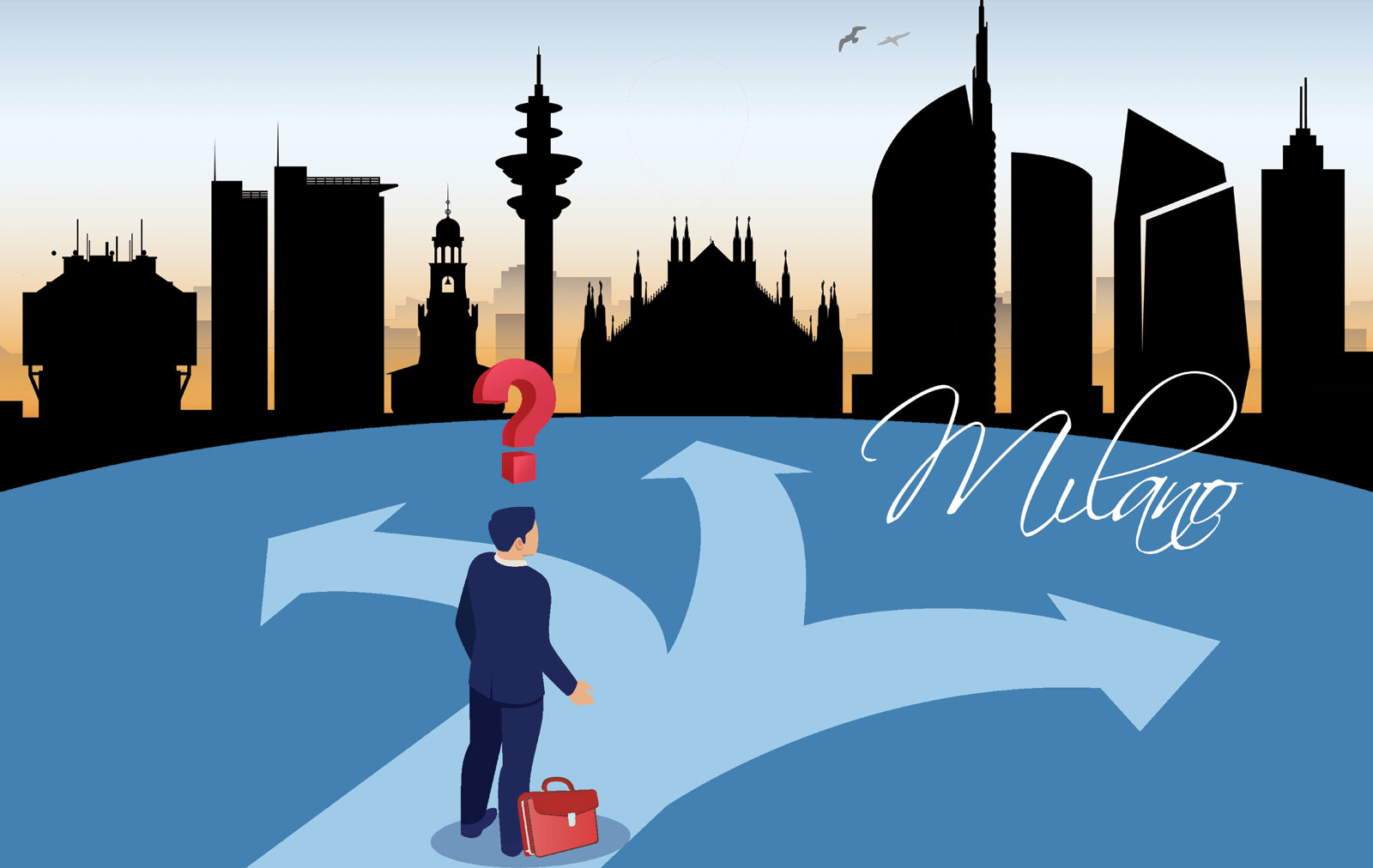
Menu:
Milan's Fastest-Growing Real Estate Districts
Across the world, big cities continue to lure people away from small countryside towns. And if we’re talking about Milan—Italy’s economic powerhouse and gateway to Europe—this trend is even stronger.
But here’s the kicker: over the next few decades, all the towns surrounding Milan will be seamlessly connected to the city, turning this already vibrant metropolis of 1.4 million residents into a true megacity.
Now, in the real estate world, there's one big question on everyone’s mind: where is the best place to buy property in Milan?
The sale of former railway yards (Scalo Farini, Porta Romana, Porta Genova, Greco…) by Ferrovie dello Stato[1], combined with massive investments for the 2026 Winter Olympics[2] and funding from the PNRR (Italy’s National Recovery Plan), makes one thing crystal clear:
Milan is growing. A lot.
Thousands of new apartments have already been built, but that’s just the beginning. In the coming years, even more will rise—modern, energy-efficient homes surrounded by green spaces, with all essential services within a 15-minute radius.
And the best part? There will be plenty of these homes available! Just take a look at the brand-new districts taking shape across Milan.
Let’s explore them in detail.
Milan’s New Apartments by Neighborhood
| |
Residential Area [sqm] |
Green Park [Ha] |
Unrestricted construction [%] |
Planned Apartments [*] |
| Farini |
358,094 |
27 |
77% |
4,800 |
| Cascina Merlata UpTown |
330,000 |
30 |
50% |
4,400 |
| Porta Romana |
164,000 |
10 |
68% |
2,200 |
| Mind |
120,000 |
65 |
67% |
1,600 |
| San Siro |
89,285 |
5 |
50% |
1,200 |
| SeiMilano |
89,072 |
12 |
50% |
1,200 |
| Porta Nuova |
72,000 |
9 |
n.a. |
1,000 |
| Porta Genova |
40,000 |
5 |
40% |
500 |
| Greco |
24,000 |
4 |
10% |
300 |
| Lambrate |
23,000 |
4 |
20% |
300 |
| Rogoredo |
20,000 |
1 |
16% |
250 |
[*] Assuming an average surface area of 75 sqm per apartment.
Scalo Farini
Located within Milan’s second ring, Scalo Farini is one of Milan’s largest urban redevelopment projects, with 4,800 newly built apartments planned.
This district is a top investment opportunity, offering modern, energy-efficient homes with access to green spaces. Property prices in Scalo Farini are expected to rise as demand for sustainable housing increases.
And this isn’t just for show. More trees mean cooler summers. Milan’s heat can be brutal, so the fact that this green oasis will lower the temperature by one or two degrees is nothing short of a miracle. If you’ve ever suffered through a sweltering Milanese August, you’ll know exactly why this is big news.
Investing in Milan? With 15+ years in luxury real estate, I’ll help you find the perfect neighborhood for your lifestyle.
Get expert guidance now!
Cascina Merlata UpTown
UpTown Cascina Merlata isn’t just another new neighborhood; it’s a carefully designed urban revolution. It was born from the collaboration of three key players: EuroMilano for residential development, Nhood for the upcoming LifeStyle Center Merlata Bloom shopping hub, and Landlease and Arexpo for the MIND Innovation District next door.
Looking at the numbers, around 15,000 people will live in this area, and a third of them are already settled in. They’ll enjoy more than 30 hectares of green space, forming the backbone of the district.
And when it comes to transport, UpTown Cascina Merlata is the full package. Metro, trams, railway connections, and even high-speed trains—mobility here is as seamless as it gets.
But that’s not all. With major hubs like MIND and FieraMilano nearby, over 25 million people will pass through this district every year. That’s fantastic news for businesses, restaurants, and shops in the area because, let’s face it, where people go, money follows.
MIND
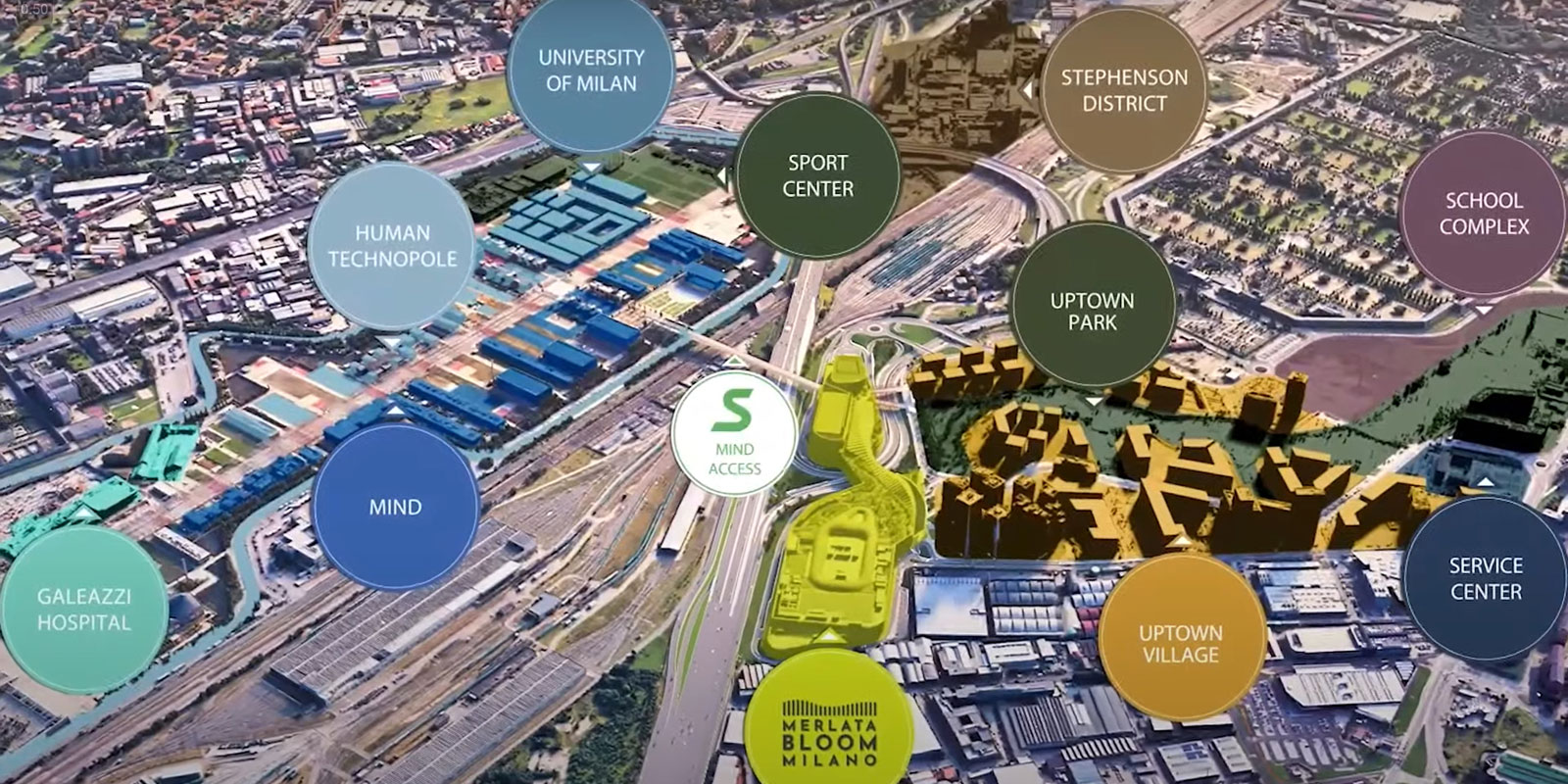
MIND stands for Milano Innovation District, and the name itself makes its mission clear: innovation and sustainability at its core.
The four key players behind MIND’s success? The University of Milan, Fondazione Triulza, Galeazzi Hospital, and Human Technopole. Together, they’re building a district designed to shape the future of research, health, and technology.
The neighborhood will rise on the former EXPO 2015 grounds and, while it won’t be fully completed until 2031, it already promises to be one of Milan’s most forward-thinking urban projects. The sustainable and inclusive residential area will make it easier for employees working within MIND to live just a few steps from their workplace.
Here are the numbers:
- 317,000 sqm dedicated to public functions (Galeazzi Hospital, Human Technopole research center, University of Milan campus)
- 90,000 sqm residential
- 30,000 sqm social and student housing
- 15,000 sqm hospitality
- 30,250 sqm production facilities
- 305,000 sqm business and office spaces
- 35,000 sqm retail and commercial
Porta Nuova
If you don’t live in Milan, the name Porta Nuova might not mean much to you. But say Bosco Verticale or the Unicredit Tower, and suddenly, ears perk up—even abroad.
These two iconic buildings that reshaped Milan’s skyline are at the heart of Porta Nuova, the largest urban redevelopment project in Europe.
But it’s not just about sleek skyscrapers and futuristic designs. People dream of living in Bosco Verticale not just because it’s a masterpiece by Studio Boeri, but because it’s located in a neighborhood that has it all—from world-class services and entertainment to a 90,000 sqm park known as BAM (Biblioteca degli Alberi di Milano).
With over 200 events per year, BAM isn’t just a park—it’s a lifestyle hub, turning Porta Nuova into one of Milan’s most vibrant and community-driven districts.
Porta Romana
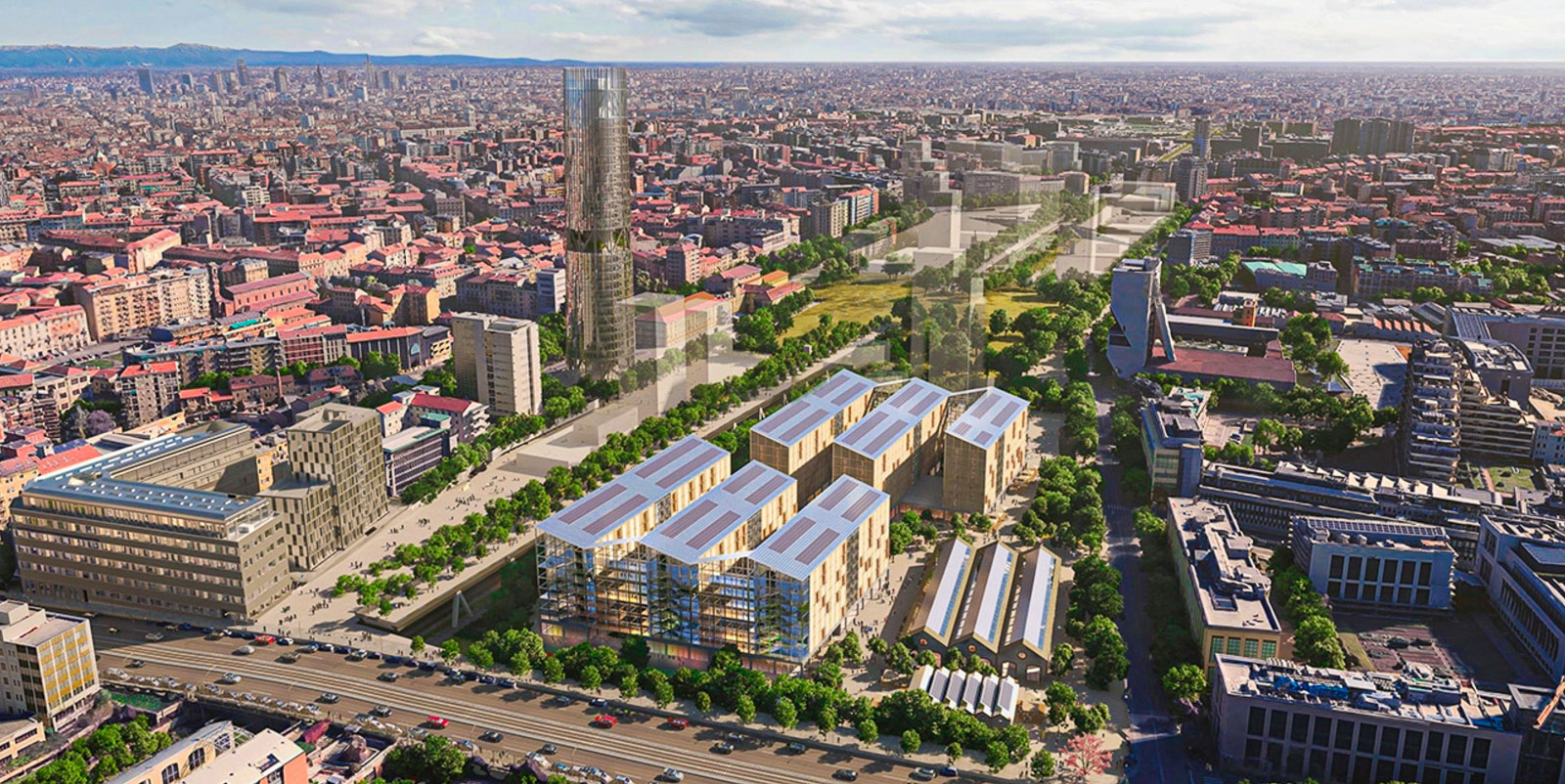
These days, talking about Porta Romana without mentioning the 2026 Milan-Cortina Winter Olympics is simply impossible. Even the cobblestones in Milan know that this neighborhood is set to host the Olympic Village, where athletes from around the world will stay during the games.
But real estate experts are asking a bigger question: What happens to the Olympic Village once the games are over?
Current plans suggest that the athletes' housing will be converted into student residences, while the surrounding spaces will be allocated for public and private use. The exact details? Still a mystery.
One thing is clear: Porta Romana is on track to becoming a zero-impact, eco-friendly residential district. Expect green spaces, high-quality services, and a lifestyle that caters to anyone looking for the perfect balance between city life and sustainability.
Ready to invest in Milan? From vibrant city living to secure gated communities, find your dream property today.
Contact us now!
SeiMilano
Located on Milan’s western outskirts, SeiMilano is a perfect blend of high-efficiency residential buildings and commercial spaces.
But it’s not just about apartments and shops—greenery plays a huge role here.
The neighborhood boasts 160,000 square meters of open space, featuring playgrounds for children and a diverse selection of tree species specifically chosen for their CO2-absorbing superpowers. The result? Cleaner, healthier air for everyone.
SeiMilano is also redefining what it means to be a smart neighborhood. Every residential complex includes shared spaces designed to foster community living. Think social kitchens, coworking spaces, repair workshops, gyms, and more.
If you're looking for a forward-thinking, eco-conscious, and community-driven place to live, SeiMilano might just be the hidden gem of Milan’s real estate scene.
San Siro
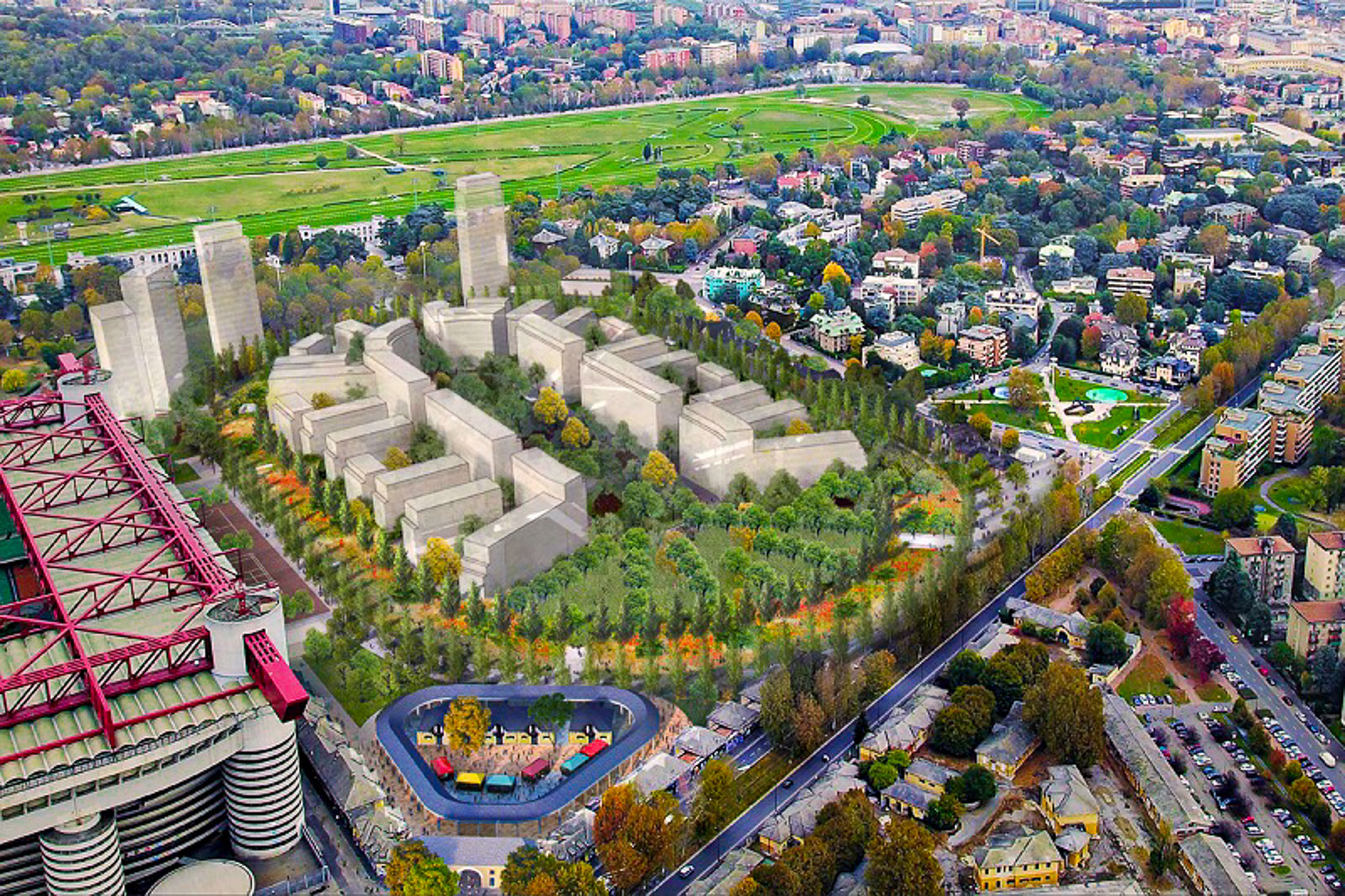
Out of all the neighborhoods we’ve explored so far, San Siro is the one with the most untapped potential. And no, it has nothing to do with the Meazza Stadium or football fanaticism.
Right now, San Siro is split in two by the wide boulevard connecting Piazzale Zavattari to the stadium. On one side, you have a more working-class area. On the other, low-rise apartment buildings and luxury villas, including the imposing Russian Consulate.
Despite being one of Milan’s most famous districts, thanks to its legendary stadium, San Siro has long suffered from a lack of essential services. Want to grab groceries? You’d better have a car.
So why is San Siro considered one of the city’s top real estate opportunities?
Because the Municipality of Milan itself is stepping in, transforming the former racetrack into a brand-new residential district, which will include:
- 55,000 sqm of parkland with 700 trees
- 45,974 sqm of free-market residential space (~700 apartments)
- 43,311 sqm of affordable rental housing (~650 apartments)
- 2,663 sqm of zero-km local shops
- 3,878 sqm of sports facilities (basketball, volleyball, padel, gym)
- 5,974 sqm of historic buildings (ex-stables), repurposed for a kindergarten (60 spots), preschool (125 spots), after-school programs, commercial spaces, and artisan workshops
And if that wasn’t enough, San Siro is now connected by the new M4 metro line, making it an even more attractive investment—regardless of what happens to the Meazza Stadium.
Speaking of which, Milan and Inter fans know that their beloved teams might abandon the stadium in the coming decade in favor of a new, more profitable venue. But with San Siro’s historical significance, the city might choose to preserve it for concerts and major events rather than demolishing it.
Either way, buying in San Siro right now is looking like a smart move.
Bovisa
Bovisa isn’t part of Milan’s grand railway yard redevelopment plan, but its regeneration is still a major deal. And if that weren’t enough, it has the signature of Renzo Piano stamped all over it.
The transformation will cover a 32-hectare area, with 9.1 hectares belonging to the Politecnico di Milano and 23.4 hectares owned by the Municipality. Construction is set to begin in early 2024, bringing 20 brand-new buildings designed for student housing and startup spaces.
The Bovisa redevelopment plan also includes:
- A massive pedestrian and cycling path
- Preservation of the existing 24-hectare urban forest
- New commercial spaces
- Public schools
- A direct connection between Bovisa and Villapizzone train stations and the Politecnico di Milano campus
With one of the world’s most famous architects at the helm and the Politecnico fueling innovation, Bovisa is set to become one of Milan’s most dynamic and future-ready districts.
Loreto
Among the many urban redevelopment projects in Milan, Piazzale Loreto is getting a much-needed facelift thanks to the LOC (Loreto Open Community) project.
What does that mean? In short, this heavily congested traffic hub will be transformed into a vibrant public space, filled with events, services, green areas, and a buzzing social scene. Imagine a place where you can enjoy the outdoors, grab a delicious meal, and spend hours in total relaxation—without the honking of endless car horns.
One of its most exciting features will be the Sky Forest, a collection of tall trees designed to cool the summer heat and absorb CO2, making Milan’s air a little more breathable. Because let’s be honest, we could all use a little extra oxygen in this city.
Porta Genova / Greco / Lambrate / Rogoredo - Santa Giulia
Unlike other booming Milanese neighborhoods, these areas share a common issue: uncertainty. Their urban redevelopment plans are lagging behind, making them more of a work-in-progress than a real estate jackpot—at least for now.
- Greco is set to undergo a transformation, with construction just starting on a brand-new district featuring 400 social housing units with gardens.
- Rogoredo – Santa Giulia has seen demolitions begin, but the final project remains a mystery. Nobody knows exactly what’s coming next.
- Lambrate is stuck in a bureaucratic limbo due to an appeal with the regional administrative court. Optimists say work should start in a few months… but we all know how that goes.
- Porta Genova is the slowest of them all. Despite being included in Ferrovie dello Stato’s real estate disposal program, it is still owned by the railway company, with no clear timeline for change.
For these districts, the potential is there, but patience will be required. Until then, they remain Milan’s "wait and see" areas—great for long-term investors but not ideal for those looking for immediate returns.
Milan: Is It Better to Buy or Sell?
The real estate market is influenced by countless factors, so predicting Milan’s property future is a bit like having your palm read in Brera—a fascinating exercise, but not exactly science.
Unfortunately, I don’t have a magic crystal ball either. But after years in the business, I’ve got a pretty good idea of where Milan’s market is headed in the next few years.
Let’s start with some hard facts.
Milan is currently seeing billions of euros in investment into former railway yards. Add to that the PNRR (Italy’s National Recovery and Resilience Plan) funds, and it’s safe to assume that, in the long run, Milan’s real estate market is set for a golden era—especially considering that more and more people want to live here.
Does this mean it’s all sunshine and roses? Not exactly. A quick look at the news will remind you that Italians’ purchasing power is shrinking.
If you’re considering buying a home in Milan, you’re probably asking yourself:
- Is it better to buy in the city center or the outskirts?
- Should I go for a brand-new apartment or a resale property?
- What size property should I invest in?
Let’s tackle these questions with some data and logic.
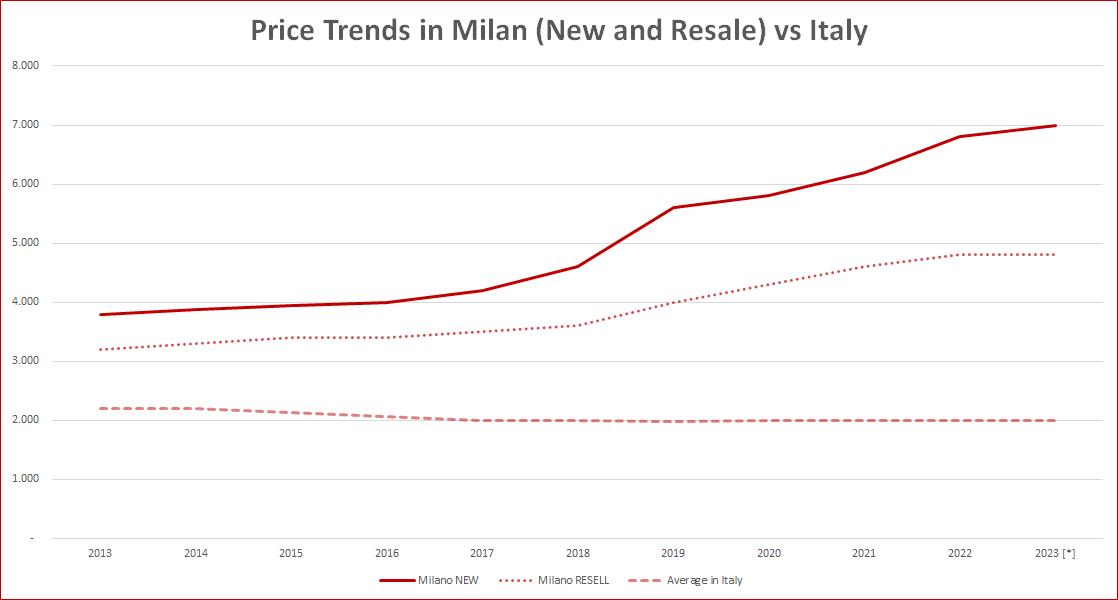
City Center vs. Outskirts: Properties in central Milan offer more price stability in case of market downturns. Historically, when the real estate market takes a hit, the first properties to lose value are lower-end homes in the outskirts.
New vs. Old Properties: Brand-new properties already meet the high standards of the future—and their value is only expected to increase. Buyer preferences have shifted significantly in the last three to four years, and frankly, if I were in your shoes, I’d have very few doubts about what to choose.
Cost Difference Between New and Old: The price gap between new and resale properties is currently around 40%, and inflation is pushing this gap even higher. Yes, it’s a significant investment, but one that’s justified by long-term value and modern amenities.
What Are the Most Popular Properties?
Based on transaction data, here’s the ranking of most sold property types in Milan:
- Two-room apartments (bilocali) – the most in-demand
- Studios (monolocali)
- Three-room apartments (trilocali)
- Four-room apartments (quadrilocali)
- Five-room apartments (pentalocali)
Long story short: Milan’s market is moving fast, and the best deals are going to those who make bold, informed decisions. Whether you're buying or selling, now is the time to act.
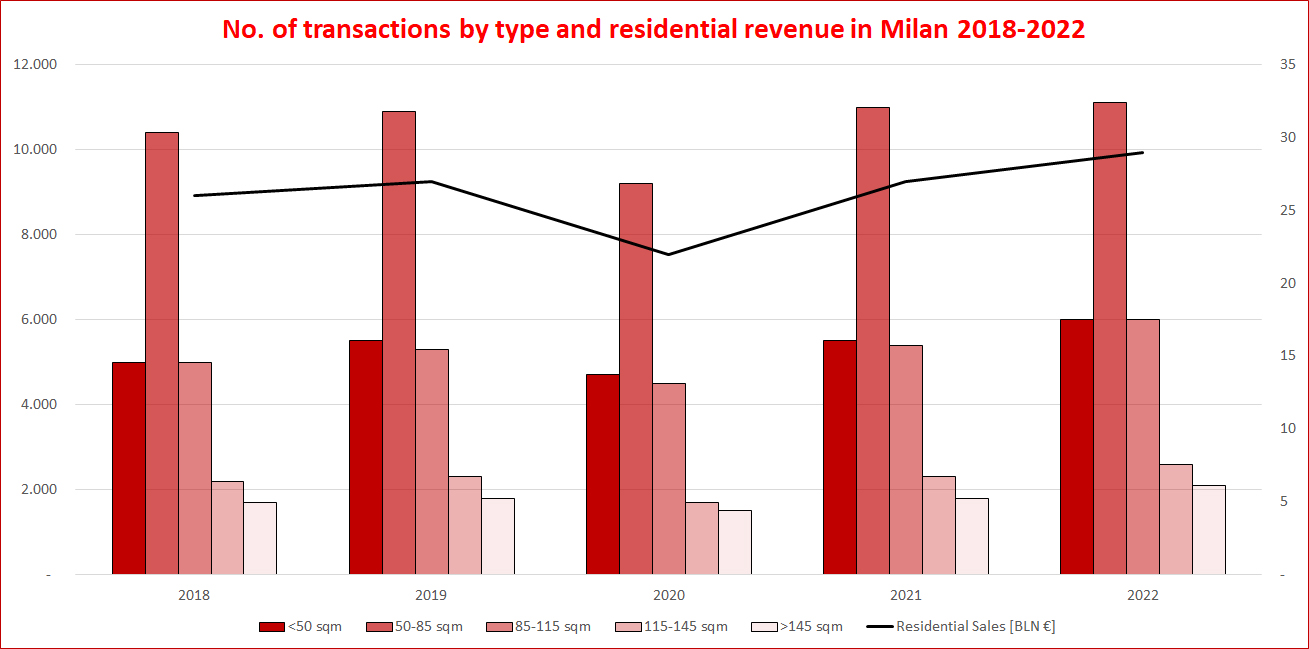
The New Rules of Real Estate – How the Market Has Changed
Back in 2020, during the Covid lockdown, we all asked ourselves: How will the world change from now on? Well, in real estate, I can tell you firsthand—everything has been completely turned upside down.
Here are some clear examples of how the market has changed:
- Terraces and Gardens Went from “Luxury” to “Essential”
Not too long ago, having a garden or a large terrace was seen as an unnecessary luxury, something buyers would sacrifice to lower the final price. Not anymore! Today, especially among younger buyers, outdoor space is non-negotiable. And if they have to settle for a “simple” balcony, it had better be at least two meters deep.
- The Great Escape from the City Center
Let’s not get this twisted—living in the city center is still amazing. But with sky-high property prices, many buyers are opting for green, quiet, and eco-friendly districts in the outskirts, where all essential services are within 15 minutes. If you find an apartment that checks all these boxes, you jump on it immediately.
- The “Green Homes” EU Directive Is Changing the Game
The European Union’s “Green Homes” Directive states that by 2033, all properties in Italy must have an energy rating of at least Class D. Translation? If you invest in homes with an A, B, C, or D rating today, you’ll likely sell them at a premium in 2033. On the flip side, properties that remain in E, F, or G class by then will plummet in value almost overnight.
- Smart Working Changed Home Design Forever
During lockdown, companies realized something big—employees can be even more productive when working from home, and businesses save a fortune on office costs. As a result, having a dedicated home office space has gone from a “nice-to-have” to a “must-have.” If you think this isn’t important and that working from the couch is just fine, you clearly don’t have small children at home.
Elena Manzhos: Mother of two beautiful children, wife, and real estate agent for over 15 years. More than 20 years ago, I moved to Italy from Eastern Europe. I have always had a deep-seated passion for houses; my love for luxurious properties is unwavering.
Fiaip,
Linkedin,
Instagram,
Facebook.